Matt Dennis: ‘Poussin and the Dance’
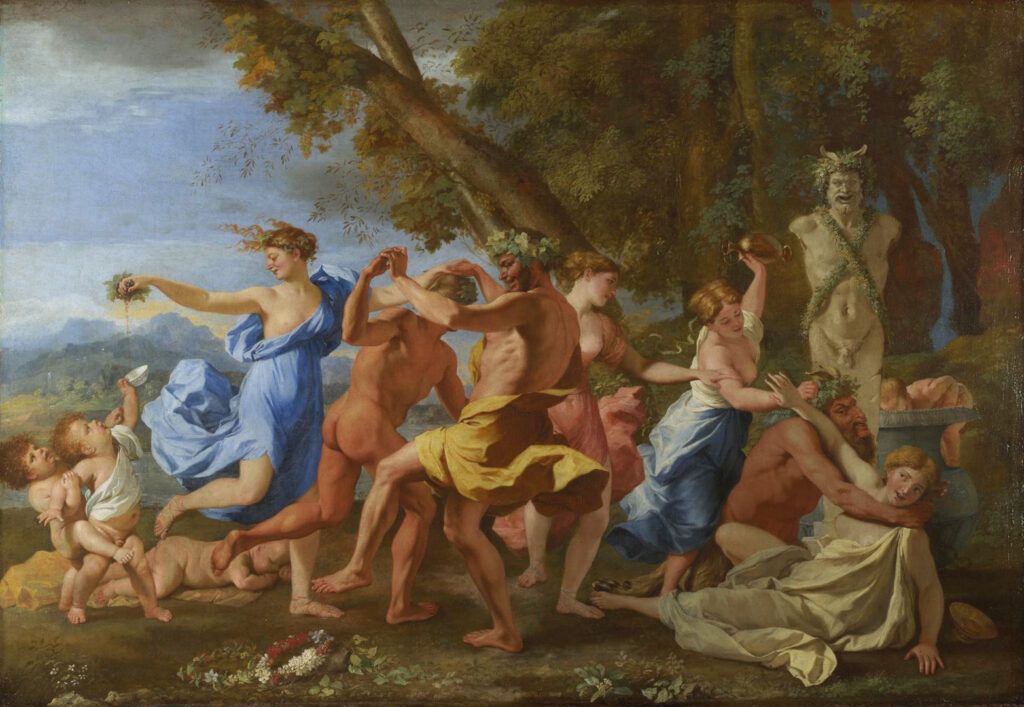
The designation ‘a painter’s painter’ gets bandied around far too freely; but if ever it was merited, the painter would surely be Nicolas Poussin. Even if Cezanne never actually declared the intention to ‘redo’ him ‘from nature’– and there is compelling evidence that he didn’t, and that the words ended up in his mouth via the inaccurate reminiscences of Maurice Denis and Emile Bernard1Reff, T., ‘Cezanne and Poussin’, The Journal of the Warburg and Courtauld Institutes, Jan-Jun 1960, Vol. 23, pp150-174– the bare fact of Poussin (as opposed to Rubens, say, or Veronese) being singled out as Cezanne’s inspiration by the painters closest to him gives a sense of how deeply the work of the ‘Father of French Classicism’ had lodged itself in the consciousness of the modern movement.
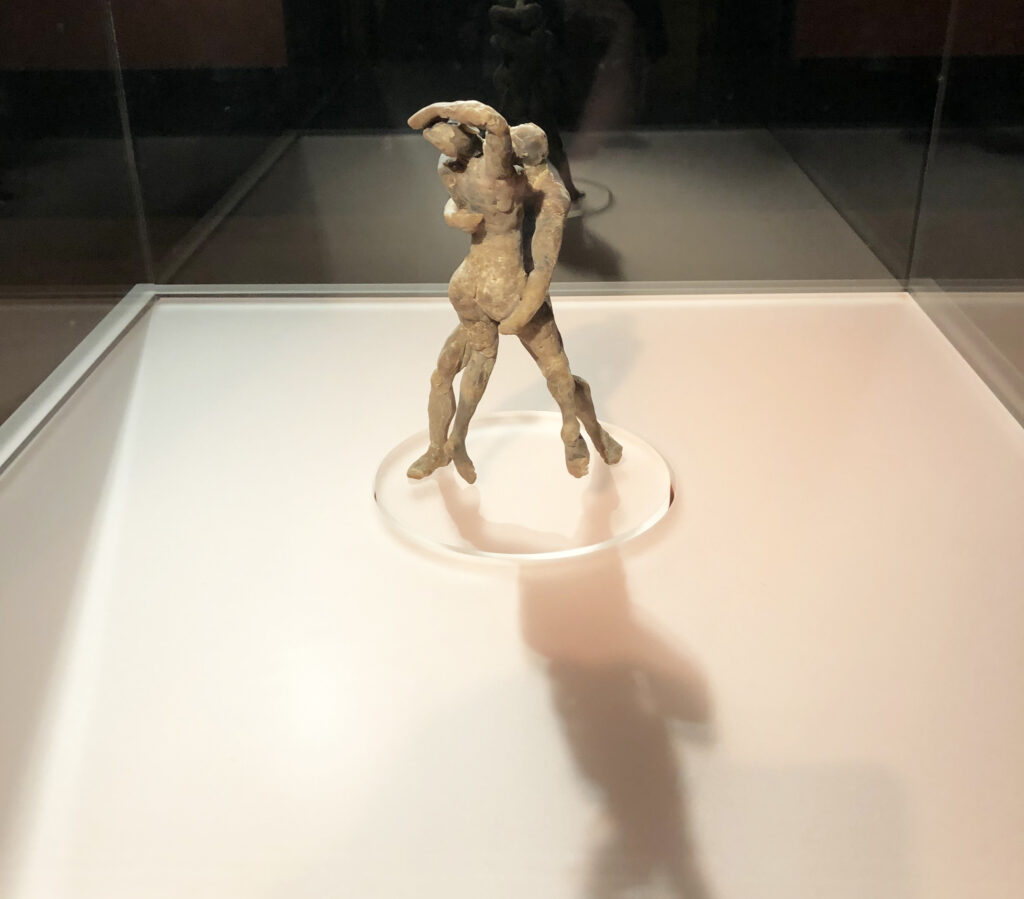
How is it that Poussin spoke so clearly to the early moderns, and speaks still to so many of us preoccupied by painting now, both makers and spectators? It’s probably safe to say that most of his choices as regards subject matter- which, in fairness, weren’t really his choices at all, but simply a necessary tactic for winning patronage from the powers that be- won’t have exactly had those born after 1850 queueing round the block; (‘Achilles among the Daughters of Lycomedes’, anyone? Or how about ‘St Peter and St John Healing the Lame Man’? No? Oh well, suit yourselves…) nor is there enough to the (admittedly unusual) working process of his maturity to distinguish him all that much from any number of painters working in his time, although the National Gallery’s show, ‘Poussin and the Dance’ has a pretty good try at persuading us there is, with its commissioned replicas of the little wax figurines that Poussin molded and then grouped in tableaux inside his ‘Grande Machine’, a wooden box resembling a scaled-down theatre stage, in which he manipulated the play of light and shadow, recording it in ink and wash, trying out poses this way and that, working the knots and clusters of bodies into writhing geometries; all before brush touched canvas. The wax replicas, and the accompanying selection of small drawings that Poussin made from the originals of these, are starkly beautiful; but none of these elaborate preparations for painting could redeem the finished works, had he been nothing more than a journeyman painter grinding out a living from depictions of the lives of saints, or scenes from classical antiquity.

So, what is it, then, that makes this group of dance dramas staged in woodland clearings, in formal gardens, and against a rocky outcrop beneath glowering skies so compelling for us, nearly four centuries on from their making? The answer lies not so much in the degree of artifice with which Poussin depicts his subject, but rather, the degree to which that artifice is his subject. To make paintings about dance, to render one art form in terms of another, is, in effect, to make art about art: and this sense of art regarding itself and declaring itself- two thoroughly modern preoccupations- is the hidden motif that threads its way through each of these works, making itself felt in the way that they seem to be standing back from themselves, coolly measuring and manipulating the frenzied action they depict through sudden shifts in manner and technique, and an emphatic use of geometric compositional structures; actions that lay bare the modes and codes of picture-making.
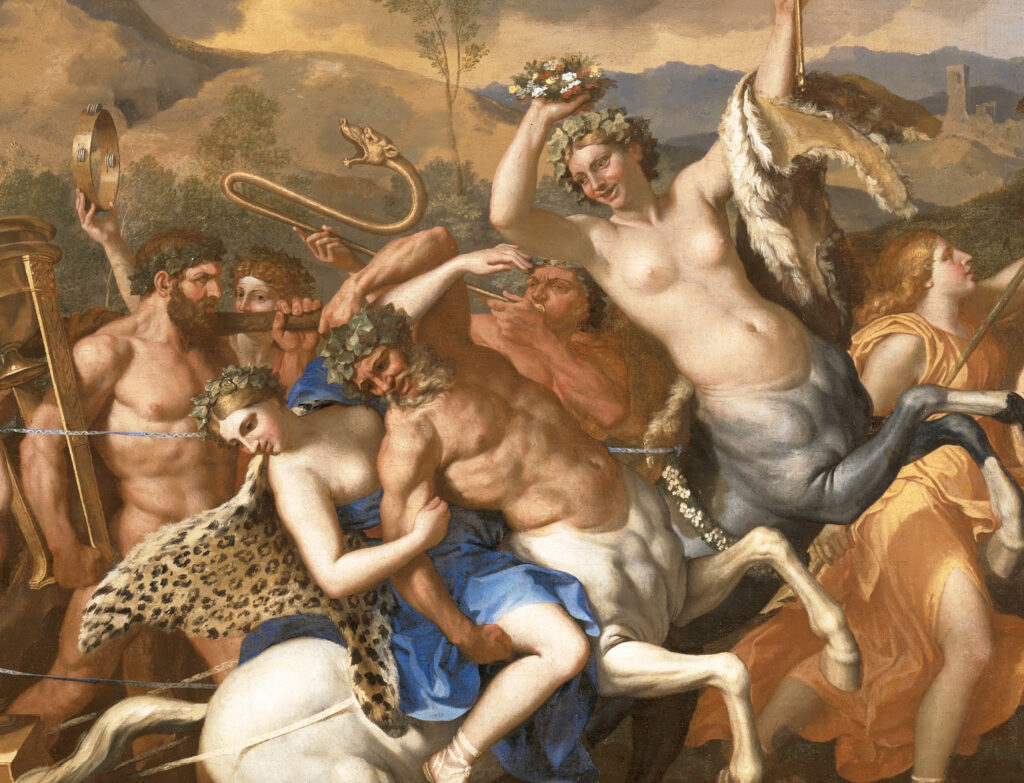
Everywhere we look, we see the means of representational painting (colour, design, modelling in light and shade expressing narrative movement; telling juxtapositions of symbolic objects) made so explicit, so blatant, that they seem to function as ends in themselves; put another way, we see the means functioning as the meaning. ‘The Triumph of Bacchus’ is as much about its deliberately grating stylistic disunity, and its inconsistencies of finish, as it is about its loud, rowdy subject: a network of brandished reins, ropes, trumpets and torches cuts across the canvas surface, slicing the procession of revellers hauling the god’s chariot from left to right into jagged, seemingly chaotic and disjointed ‘zones’ containing figures or parts of figures, some fully modelled in warm, earthy hues, some simply blocked in, some (such as the rearing female centaur, and the woman riding on her companion’s back) seeming to exist in a register all their own, lit from within, rather than by the painting’s ambient light. Its companion piece, ‘The Triumph of Pan’, goes as far as possible the other way, opposing, rather than cultivating, the chaos of the al fresco orgy by channelling it into interlocking geometries of figures that mesh together so tightly that they form a horizontal band of flesh and fabric dividing the canvas into three tiers; these, in turn, seem to impose a further kind of order by embodying the categories of painting from the ground up- still life, figure, landscape; or, once the eye has registered that, above the frieze of flesh, the call of the elongated trumpet raised by the male reveller, top left, is answered by the inviting oval of the tambourine being shaken by his female counterpart, top right, and that the bunched-up drapery and discarded mask in the foreground come together to form a sprawled, spent body, then the painting reads downwards- foreplay, action, aftermath. Meanwhile, in ‘A Bacchanalian Revel before a Term’ the paint seems to be in the act of detaching itself from the painting, and taking on a life entirely independent of its depicted action: the whirling dancers are as much swatches of the primary colours, moving indexically from blue, to earthy red, to yellow, and back to blue, as they are figures in frenzied motion.
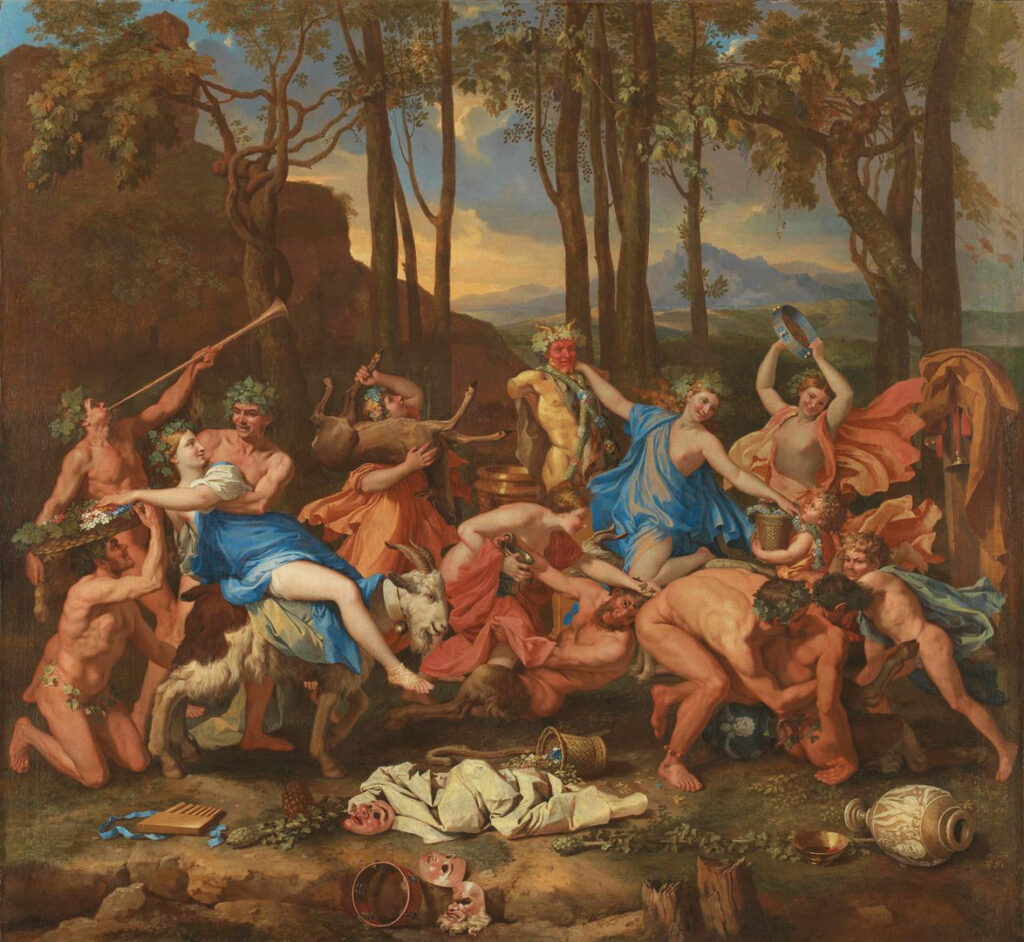
It’s as if, by giving himself permission to shake off all the dour responsibility of delivering the sort of morally elevating visual homilies that Church and State patronage demanded, and provide his private patrons (most prominently, Cardinal Richelieu, the second most powerful man in France after the King) with the examples of the newly-fashionable genre of the ‘dance picture’ that they craved, Poussin ditched the sacred in favour of the profane, and in doing so, also gave himself permission to take such stunning liberties with painting, with how its meanings are constructed and construed. As ‘Poussin and the Dance’ aptly demonstrates, he drew extensively on the art of classical antiquity- its friezes, bas-reliefs, ceramics, and sculpture in the round- in developing his vocabulary for the creation of these paintings; but the myth they depict, the ecstatic dance before a statue of the garden god, isn’t really to be found anywhere before Poussin painted it.
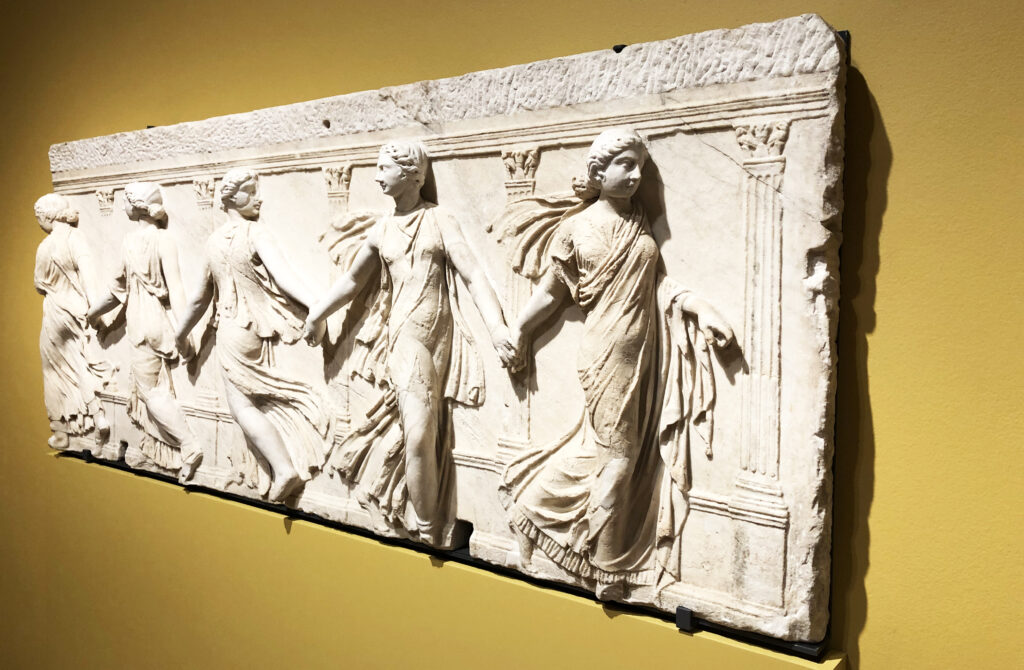
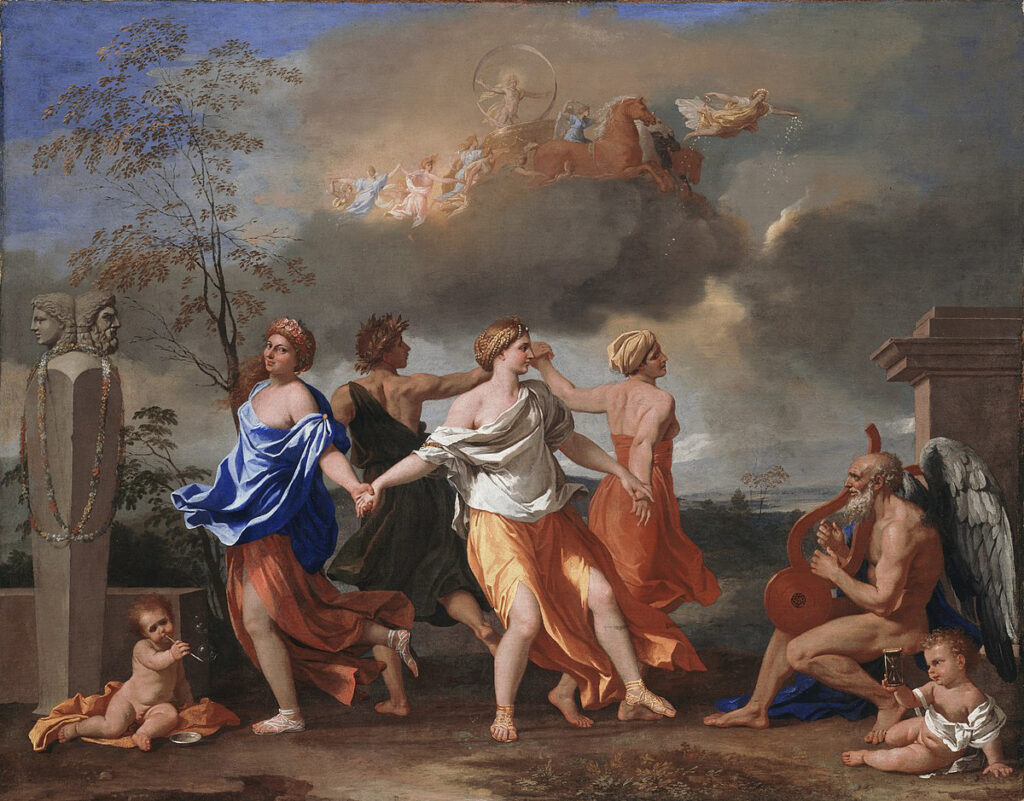
Here, the myth is empty. It’s a tabula rasa, a blank slate; it has a vacuum at its centre where its subject should be. Poussin fills this vacuum with a myth of his own: the myth of painting.
Centuries before Friedrich Nietzsche formulated the concept in ‘The Birth of Tragedy’, these extraordinary pictures can be understood as enacting the coming-together of what he saw as the twin forces at work within the culture of the ancient world: the Apollonian (the rational, the analytical, the measured), as against the Dionysian (the irrational, the instinctive, the ecstatic), expressed here not in terms of the literal appearance of the two gods within the paintings’ action- although both do feature, extensively2Well, Apollo does, but to be precise, the place of Dionysus is filled by Bacchus or Pan. They’re all the same, though, mythologically speaking– but in the cool control of the paintings’ forms, as against the hot delirium of their subject. These works are both detached from, and engaged with, what painting is and does; and it is for this reason they seem familiar to us now in our sceptical, disenchanted condition, in a way that the works of so many of his peers and his predecessors do not. We feel as if we recognise, and understand, the knowing look in the eyes of the smiling dancer in ‘A Dance to the Music of Time’ as she breaks down the ‘fourth wall’ of painting to address her gaze to us: it’s hard to say exactly what the joke is, but she is in on it, and so are we. Whatever the movements of this woman and her three companions turning in tight formation beneath a brightening sky might have meant to anyone then, to us, now, they are painting gesturing to itself, turning back on itself, encircling itself, endlessly.
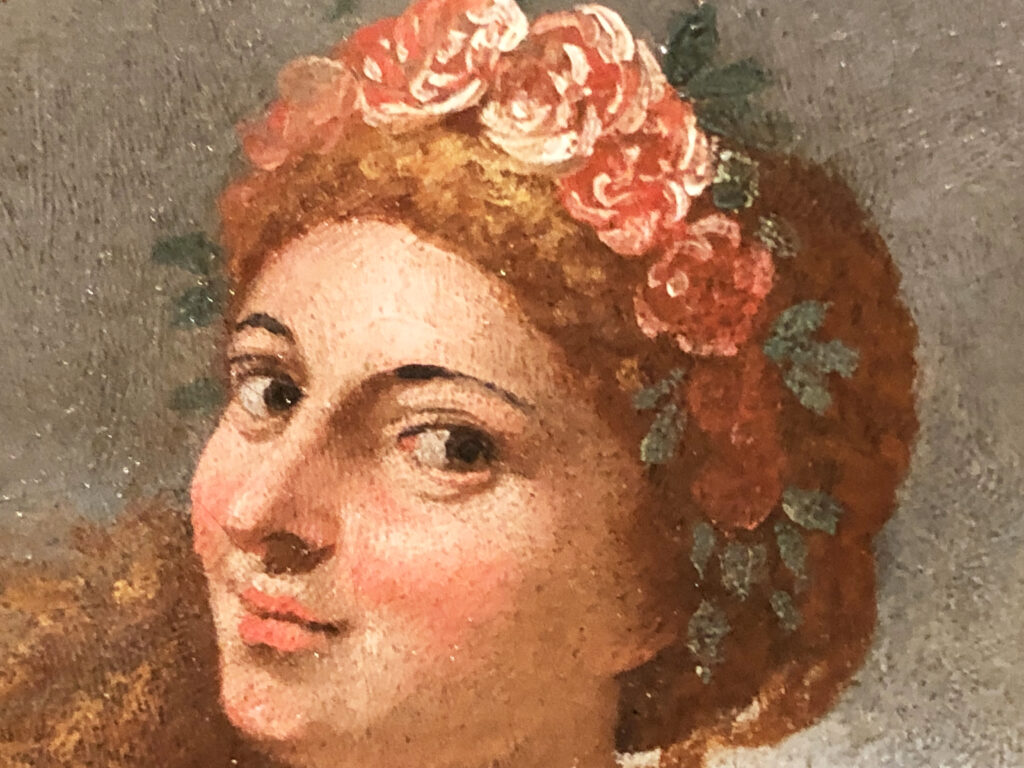
‘Poussin and the Dance’ is showing at the National Gallery, London, until January 3rd 2022. See this superb show.
3 thoughts on “Matt Dennis: ‘Poussin and the Dance’”
Really promised myself I wouldn’t leave a comment. However, it’s New Year’s Eve and I just wanted to say a big ‘thank you‘ to John and Matt for a wonderful year of articles. It means a great deal to know these questions are being asked. Best New Year to Instantloveland, looking forward to 2022, Patrick
I must confess that I have a block about Poussin’s art. The National’s exhibition contained his major paintings; perfect, too perfect. The drawings where he uses little wax sculptures to study the effects of light do not give me goose pimples the way Rembrandt does; and his obsession with high classical Greek relief makes me shudder (it is the austere style that I’ve had enough of). That said, he was a great artist, and it is his austere ‘Self Portrait’ of 1650 that creams it; but with ‘The Dance to the Music of Time’ we have a single cream.
So thank you, Mr. Dennis, for your very illuminating and thoughtful essay, and please forgive me for coming directly to the subject and to my feelings.
Correction to my previous reply. In brackets it should be ” …the austere style that I have not had enough of “